NEW DELHI: In September 2023, India’s top-ranked tennis player, Sumit Nagal, confessed in an interview, “If I look at my bank balance, I have what I had at the beginning of the year. It is 900 euros (approx Rs 80,000).”
As soon as the statement went viral, support started pouring in for the 26-year-old athlete, with Sumit signing a deal with PepsiCo-owned Gatorade and DLTA (Delhi Lawn Tennis Association) releasing a one-time support of Rs 5 lakh for the Indian tennis player.
Now that his financial difficulties are sorted a bit, World No. 170 Sumit is back to his main vocation, focusing on his game with an aim for a strong finish to the season.
Sumit joined all the way from Germany for an exclusive chat with TimesofIndia.com, talking about the Tennis Premier League (TPL) auction, where he became the most expensive player for season 5, about his annual budget, his tennis journey so far and much more. Excerpts:
I have been spending Rs 1-1.5 crore annually, says Sumit Nagal
You are bought for a whopping Rs 18.5 lakh in the TPL auction. How do you feel about being the most expensive player for season 5 of the TPL?
It’s a proud feeling to be sold as the most expensive player in India and looking at the players TPL have brought this year. Ernests Gulbis, Dennis Novak, and Lukas Rosol — they have all been top hundreds. I think they (TPL) have been doing a good job. They’re doing a fantastic job, trying to make tennis a little bit more popular in India. So, looking at it, it is probably the third or second biggest sport in the world; and India is the most populated country now. And having been sold at the highest price, it is a nice feeling.
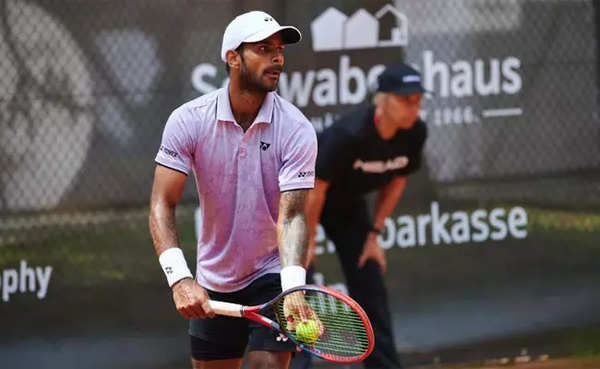
How different is the league like TPL from the usual ATP tour?
The league (TPL) and the tour are very different, I’m sure. It’s a nice feeling to play the league in our country, to represent Gujarat Panthers, but it is very different from what we do every day on a daily basis (in the tour).
With your financial difficulties almost sorted now, what is your immediate goal?
Right now, my focus is back to playing the tennis matches. I said what I had to say earlier in September, but now I am just getting ready for the tournaments again, and I will try to finish the season strong.
Your thoughts on the corporate support that came along recently and how much it is a help?
Every help you get from the companies, it helps a tennis player from India. I’ll just talk about tennis players from India because we do lack financial support. If you have to play the majority of the time, you have to pay for your coaches, your expenses, and it comes out a lot in tennis because you’re playing so many tournaments, in and out so many flights, so many different hotels. So every time you get help from someone, I really appreciate it. And it helps out a lot in someone’s career, who’s trying to play at the highest level, flying to America, for example, to Europe, up to China. I know it costs money at the end of the year.
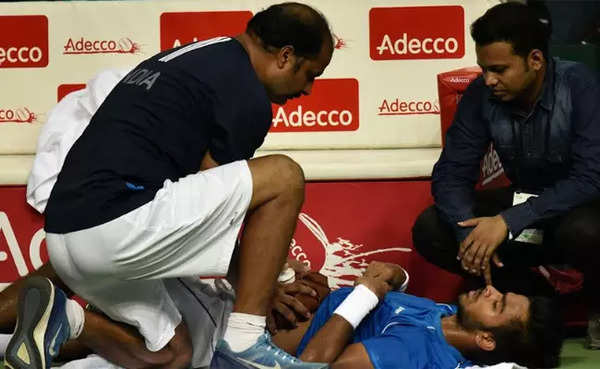
Could you tell us more about your annual budget to survive on the ATP Tour and the challenges you faced before receiving this support?
The thing with tennis is that it is a funny sport. You can spend as much as you want. Firstly, you have to figure out what your budget is for a tennis coach. If you have got a little bit extra, then you get your fitness trainer involved. Then if you have a little bit extra, then you get a physio involved. If you have a little bit extra, people travel with doctors, I’m just giving an example, so it all depends on what type of budget you have. You can spend as much as you want because there are some coaches who are going to cost you, for example, 2,000 or 3,000 euros a week. And then, there are some coaches who are going to cost you 7,000 euros a week. So it all depends on how much you can spend.
There are coaches charging over 10,000 euros a week who are coaching the top 20 players. Their coaches would charge them almost 300,000 to 400,000 dollars a year on a contract. So it all depends on who you are, where you’re living, and what is the budget you want to spend. I’ve been spending more than Rs 1-1.5 crore on a yearly basis.
How do you view the role of sponsors and corporate in supporting athletes, especially during challenging times like these?
It’s a big help when they come in and try to help us financially. It helps you to travel with a tennis coach; it helps you to travel with a fitness trainer or a physio. What I really like to do is to travel with a tennis coach and a physio because I am one of those guys who want to stay fit for the whole year. If I feel like I can play the whole year, I could be in a good spot in the top 100. So, this is my personal preference. I’m sure that there are people who would like to travel with their tennis coach and a fitness coach. These are the most important parts. There is coaching, there is your support staff; and being able to pay for them is the most important part.
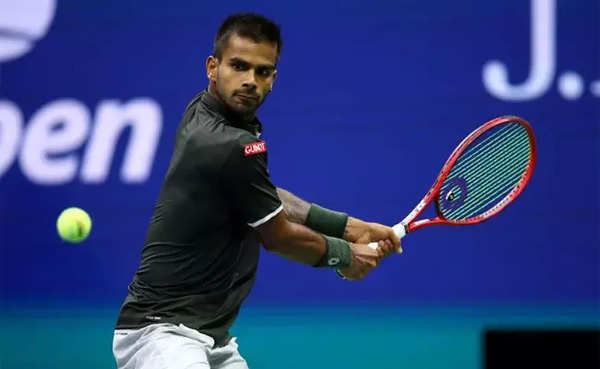
What are your personal goals and expectations for the 2024 tennis season?
First is the month of November that is coming. I’m preparing for this month. I’m going to play three or four tournaments. It will mostly be the Challengers. I would like to finish as high as possible in the rankings. If I can finish within maybe 110; being in the top 100 would be the best scenario. But if I cannot and I finish in 120, I’ll be in a good spot to start the next year. My goal is to finish in the top 100 before April because I am not defending much. For people who don’t know much about tennis, whatever points we make, it stays for 12 months. I will start defending my points from April-May onwards. So I have this window of the next five months, where whatever I make I will keep the points. It will benefit my ranking.
What are the tournaments that you are looking forward to playing in the coming months?
In the month of November, I’m going to play a tournament in Helsinki, then maybe play in Sweden and then play the last two in Spain. After that, I will take a few days off, get ready, play the league (TPL), get ready for the pre-season and then start January in Australia with the tournament prior to the Australian Open.
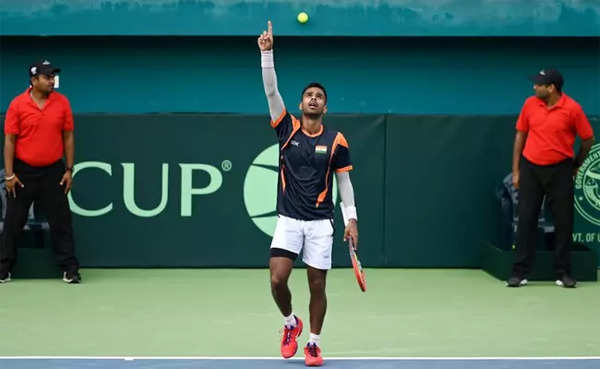
Tennis is often described as a demanding, tough and lonely sport. What are the key factors that keep you motivated and driven to excel in this sport?
I think of doing something for myself, for my family. I came from a very small, humble background. First of all, I don’t even come from a sports background. I come from a small village, moved to Delhi when I was young. To be able to play in the biggest tournament, to be able to play on the biggest court, against Roger (Federer), and then play the Olympics. It already means something to me. And every time you achieve these milestones, it motivates you more and more and more.
The first thing that happens when I call my parents, I can feel their voices, I can see how emotional they get. For example, my mom and dad came to the Davis Cup match in Lucknow. And it was the first time they had travelled outside Delhi to watch me play. I think it was the first time for my mom. And after the match, she got emotional, she said, “It felt so nice to watch you play.” You live for those moments, and that is one of the reasons I keep pushing myself. Look for those moments that make your life better or help you.
As a role model for aspiring athletes in India, what message do you have for the next generation of tennis players in the country?
For tennis players, I would say do not be afraid of losing, a lot of people have this fear like I don’t want to lose. At the end of the day, nobody wants to lose, but at the end of the day, there will be a winner and a loser, which is fine. Sometimes you’re going to lose. Even the best players can’t win all the matches, but you play to improve, especially at a young age. You have to play to improve and not worry about losing.
While playing in the franchise league, do you feel the same pressure as playing for individual glory or title? How do you prepare yourself mentally that it is a team game and not an individual tournament?
The pressure is definitely different when you play the Davis Cup or when you play the Asian Games and Olympics. When these come at you, you cannot run away from it; you have to face it. How I deal is, when I step on the court, the first few games are very important because that’s when you are the most nervous. Once you get into the match and once your body is moving, you start to feel better and better. So, how do I do it? I try to move extra in the first few games, and I try to make the rallies longer so that I have inner balls to hit, inner balls on my racket. And I’m moving more than usually I would. So the nervousness goes out of my body.
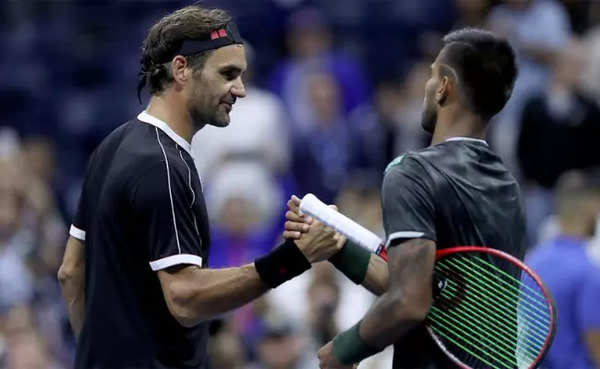
When you were playing against Roger Federer (in the 2019 US Open), what was going through your mind?
I mean there’s a lot of feelings — good, nervousness. After winning the first set…I knew there were two more to go. So my first thing was to sit down, calm myself, and try to focus, how to keep this going. So I don’t think I was thinking outside the box. My main concern was how I should start the second set. I needed to take the lead, which obviously didn’t happen. I ended up losing the second and third set. I felt a little bit sad about not breaking him in the last game he served 0-40. That’s when I felt like I started to play a little bit better and better. I was getting better with the coach, with the environment, and with the crowd, understanding him how he played.
Other than that, talking about qualifying for the first time and then playing Roger, I mean that is the best feeling, to play against him in the US Open. I don’t think I could have asked for more because this is what I wanted. When I qualified on Friday, I was hoping that I would play Roger because, as I said, this would be a dream come true.
Watch I have been spending Rs 1-1.5 crore annually, says Sumit Nagal
